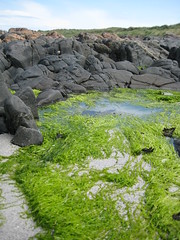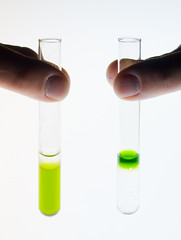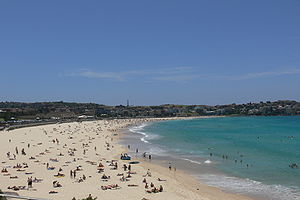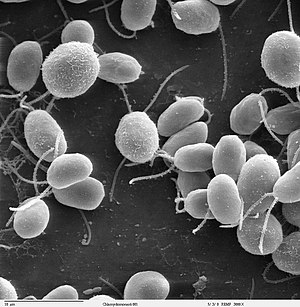We focus a lot on algae on this blog which reflects the masses of innovation and experimentation with the substance.
This story on harvesting chemicals at sea caught my attention. A team of researchers at SAMS in Scotland have finished the harvesting of Europe's first trails of seaweed cultivation in the open sea using advanced textiles.
The textiles were developed for large-scale cultivation of seaweed for biomaterials and biofuels in coastal areas.
The three-year project called AT-SEA aimed to get an idea of how the textiles performed in different locations.
 This
week sees the completion of seaweed harvesting in Europe’s first trials
of seaweed cultivation in the open ocean using advanced textiles. The
cutting edge textiles have been developed specifically for large scale
cultivation of seaweed for biomaterials and biofuels in coastal seas.
This
week sees the completion of seaweed harvesting in Europe’s first trials
of seaweed cultivation in the open ocean using advanced textiles. The
cutting edge textiles have been developed specifically for large scale
cultivation of seaweed for biomaterials and biofuels in coastal seas.
Devised as part of a 3-year European project called AT~SEA, the textiles have been subjected to simultaneous trials in inshore waters off the coasts of Norway, Scotland and Ireland. These locations were chosen to expose the textiles to different oceanographic, environmental and climatic conditions on a latitudinal gradient.
- See more at: http://www.sams.ac.uk/news-room/news-items/harvesting-sustainable-chemicals-at-sea#sthash.k5T3FrQD.dpuf
This story on harvesting chemicals at sea caught my attention. A team of researchers at SAMS in Scotland have finished the harvesting of Europe's first trails of seaweed cultivation in the open sea using advanced textiles.
The textiles were developed for large-scale cultivation of seaweed for biomaterials and biofuels in coastal areas.
The three-year project called AT-SEA aimed to get an idea of how the textiles performed in different locations.
How advanced textiles and seaweeds can reduce our crude oil dependency
 This
week sees the completion of seaweed harvesting in Europe’s first trials
of seaweed cultivation in the open ocean using advanced textiles. The
cutting edge textiles have been developed specifically for large scale
cultivation of seaweed for biomaterials and biofuels in coastal seas.
This
week sees the completion of seaweed harvesting in Europe’s first trials
of seaweed cultivation in the open ocean using advanced textiles. The
cutting edge textiles have been developed specifically for large scale
cultivation of seaweed for biomaterials and biofuels in coastal seas.Devised as part of a 3-year European project called AT~SEA, the textiles have been subjected to simultaneous trials in inshore waters off the coasts of Norway, Scotland and Ireland. These locations were chosen to expose the textiles to different oceanographic, environmental and climatic conditions on a latitudinal gradient.
First time ever: cultivating seaweeds in Europe’s coastal seas
“The AT~SEA project aims to make mass cultivation of seaweeds in Europe’s near-shore locations technically and economically feasible by creating textile substrates that can endure the harsh conditions that they are exposed to as the seaweed grows”, says Bert Groenendaal of Sioen Industries and coordinator of the AT~SEA project. The same materials have been used in each of the trials and the same species of seaweed grown on them to get a European view of how these textiles perform in varying conditions.- See more at: http://www.sams.ac.uk/news-room/news-items/harvesting-sustainable-chemicals-at-sea#sthash.k5T3FrQD.dpuf
How
advanced textiles and seaweeds can reduce our crude oil dependency -
See more at:
http://www.sams.ac.uk/news-room/news-items/harvesting-sustainable-chemicals-at-sea#sthash.k5T3FrQD.dpuf
More information... |
| Seaweed (Photo credit: alitheg) |


































